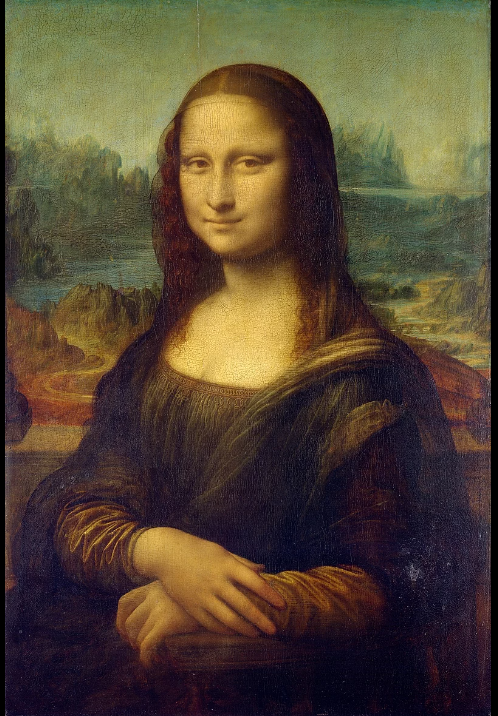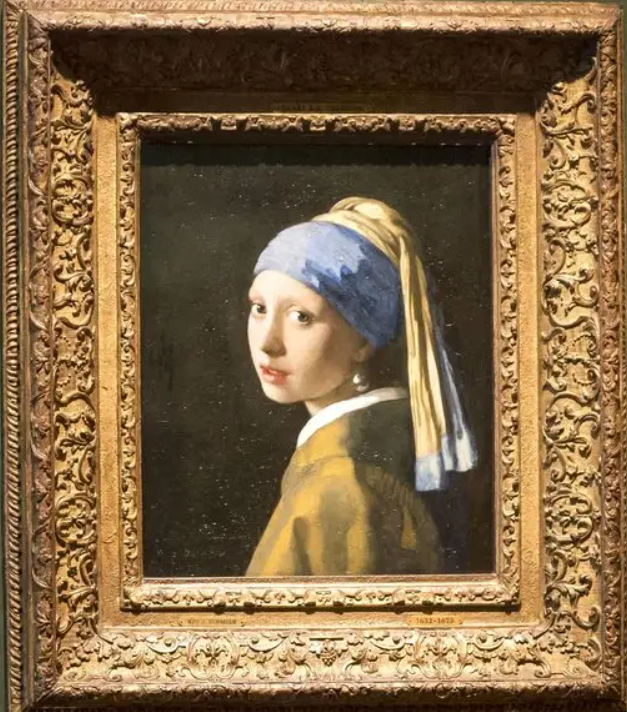Inspiration Piece

The “Mona Lisa”, also known as La Gioconda or La Joconde, is a painting created by the Italian artist Leonardo da Vinci (Zawislak, 2022). The painting originated in Florence, Italy. It is currently housed at the Louvre Museum in Paris, France. It is believed that the painting was commissioned by Francesco del Giocondo, a wealthy merchant from Florence, for his wife Lisa Gherardini, hence the name Mona Lisa. It is considered one of the world’s most famous and celebrated artworks. It can inspire people in several ways (Zawislak, 2022). As a work of art, it inspired me to appreciate the beauty and skill of painting. The painting’s subject, a woman with a mysterious smile, has been interpreted in many ways, which can inspire people to think about the meaning of art and the human condition (Martin & Jacobus, 2014).
My Art Piece

The artwork “Girl with a Pearl Earring” was completed by the Dutch master Johannes Vermeer in the 17th century. One of Vermeer’s most recognizable paintings dates back to 1665 (Elkhuizen et al., 2019). A young girl with a headscarf and pearl earrings gazes pensively and mysteriously at the observer in the picture. Whether the girl is a servant, a member of Vermeer’s family, or a made-up figure is unclear, as is her identity. Light, color, and arrangement make this artwork famous (Elkhuizen et al., 2019). To attain such realism and precision in the details, Vermeer employed a method called “camera obscura” to transfer the picture onto the canvas. The girl’s face is backlit by a gentle, diffuse light that adds depth and character to the picture. Like the “Mona Lisa”, this generates curiosity and speculation. In recent years, “Girl with a Pearl Earring” has gained further fame and interest due to the novel and movie by Tracy Chevalier, both based on the painting and the artist’s life.
Both the “Mona Lisa” by Leonardo da Vinci and Johannes Vermeer’s “Girl with a Pearl Earring” feature a lady with a mysterious look and are widely regarded as artistic masterpieces of their respective eras. The subject matter, medium, and formal aspects of design are all distinct among the works. The “Girl with a Pearl Earring” depicts a young lady draped in a headscarf and wearing a pearl earring, whereas the “Mona Lisa” is widely believed to be a picture of Lisa Gherardini, Francesco del Giocondo’s wife.
Although both are oil paintings, the “Mona Lisa” is more prominent at 77 × 53 cm (30.3 x 20.9 inches), and the Vermeer is much smaller at 44.5 x 39 cm (17.5 x 15.4 inches) (30 x 20.9 inches). Oil paint is a slow-drying medium that allows the artist to blend colors, create a range of textures, and achieve high realism. This medium is particularly suitable for portraiture and allows the artists to capture the subtle nuances of the human face and expression. Oil paint is versatile and expressive, allowing artists to capture subtle details and create realistic effects. Its effect on the spectator creates an illusion of depth and three dimensions. Both paintings use formal aspects of design—composition, light, color, and the placement of the subject—to create a feeling of mystery and intrigue.
Both “Girl with a Pearl Earring” and the “Mona Lisa” are considered masterpieces of their respective periods; both painters were able to capture their subjects in a way that is both realistic and evocative. They share the same thematic connection, a contemplative and enigmatic expression on the subject’s face (Martin & Jacobus, 2014). This creates a sense of mystery and intrigue, drawing the viewer’s attention and encouraging them to contemplate the meaning of the painting.
References
Elkhuizen, Willemijn S., Tom WJ Callewaert, Emilien Leonhardt, Abbie Vandivere, Yu Song, Sylvia C. Pont, Jo MP Geraedts, and Joris Dik. (2019). “Comparison of three 3D scanning techniques for paintings, as applied to Vermeer’s ‘Girl with a Pearl Earring’.” Heritage Science 7, (1), 1-22.
Martin, F. D., & Jacobus, L. (2014). Humanities through the Arts. McGraw-Hill Education.
Zawislak, B. M. M. (2022). Mona Lisa and her mysteries. Digitaliza Conteudo.